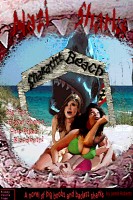Lovecraftian horror, an elaborate mythology of the unseen and the incomprehensible forces of ancient, eldritch terrors that lurk in unspeakable nooks of forgotten time, hidden space, and unimaginable dimensions. It also involves a lot of adjectives. This is all notoriously difficult to represent in the cinematic medium, and those few that have been successful are worth clinging to with religious fervor.
I present to you, then, The Resurrected (AKA Shatterbrain) (1994), an all-too-neglected masterpiece of Lovecraftian horror and generally a very good horror film. It succeeds where many have failed. It brings The Case of Charles Dexter Ward to the screen with a fair number of alterations, but they all work; it shows as much as it can, but it all scares and leaves one thinking that this was only the tip of the iceberg.
Director Dan O'Bannon also happens to be the screenwriter behind Alien, The Return of the Living Dead (which is also his only other directing credit), and Total Recall, amongst others. As a screenwriter, his talent has been established a strongly coherent fusion of grotesque, all-too-visible horror, action, intelligent characters, and excellent suspense. Although not the obvious choice to adapt Lovecraft, this was clearly a personal project for O'Bannon.
O'Bannon's technique in The Resurrected is to fuse Lovecraft with his contemporary pulp writer Dashiell Hammett, bringing together the weird tradition with the hardboiled tradition.
Naturally, then we begin the story--after a gripping, gory frame segment--in the office of a private detective being visited by a gorgeous, classy dame. She informs him that her husband might be in trouble. It seems he's looking rather ill and has been holed up in an old house he inherited with an Asian heavy guarding the door.
The private detective's investigation takes the role of the reader in any Lovecraft story. One digs deeper into information that seems at the surface almost innocuous, if a little creepy, until its full horror detonates in one's mind. So does our detective dig himself down deeper until he finds himself in the midst of alchemical experiments and a long-dead necromancer's sinister designs.
As stated before, O'Bannon's modus operandi is to show rather than suggest. The horrible mutations are brought to life in full-bodied latex creations. These may seem a little hokey to some, to others, who still have a place in their heart for traditional horror special effects, they will be truly unsettling.
A testament to how deft the direction is, there is one scene in nearly pitch black, lit only with a match, that is so frightening it had this reviewer with his head against his knees in the middle of the day. It shows just enough and hides just enough to immerse one in the full primordial fear of the dark.
While The Resurrected has gradually been undergoing a favourable critical reevaluation since released on DVD, it still doesn't get the attention of many lesser horrors of the '90s, or indeed of many lesser Lovecraftian horrors. As a uniquely successful fusion of two diametrically opposed trends--suggest-don't-show from Lovecraft and the show-it-all from O'Bannon--this is film is particularly worthy of a wider audience and greater scrutiny.
Help make this site more interesting through discussion:
The Resurrected (1992)
Author: Jared Roberts
Subscribe to:
Post Comments (Atom)

2 comments:
Nice review!
The movie is actually from 1992.
Cheers!
Thanks for the correction. I get years wrong a lot. Just carelessness.
Post a Comment